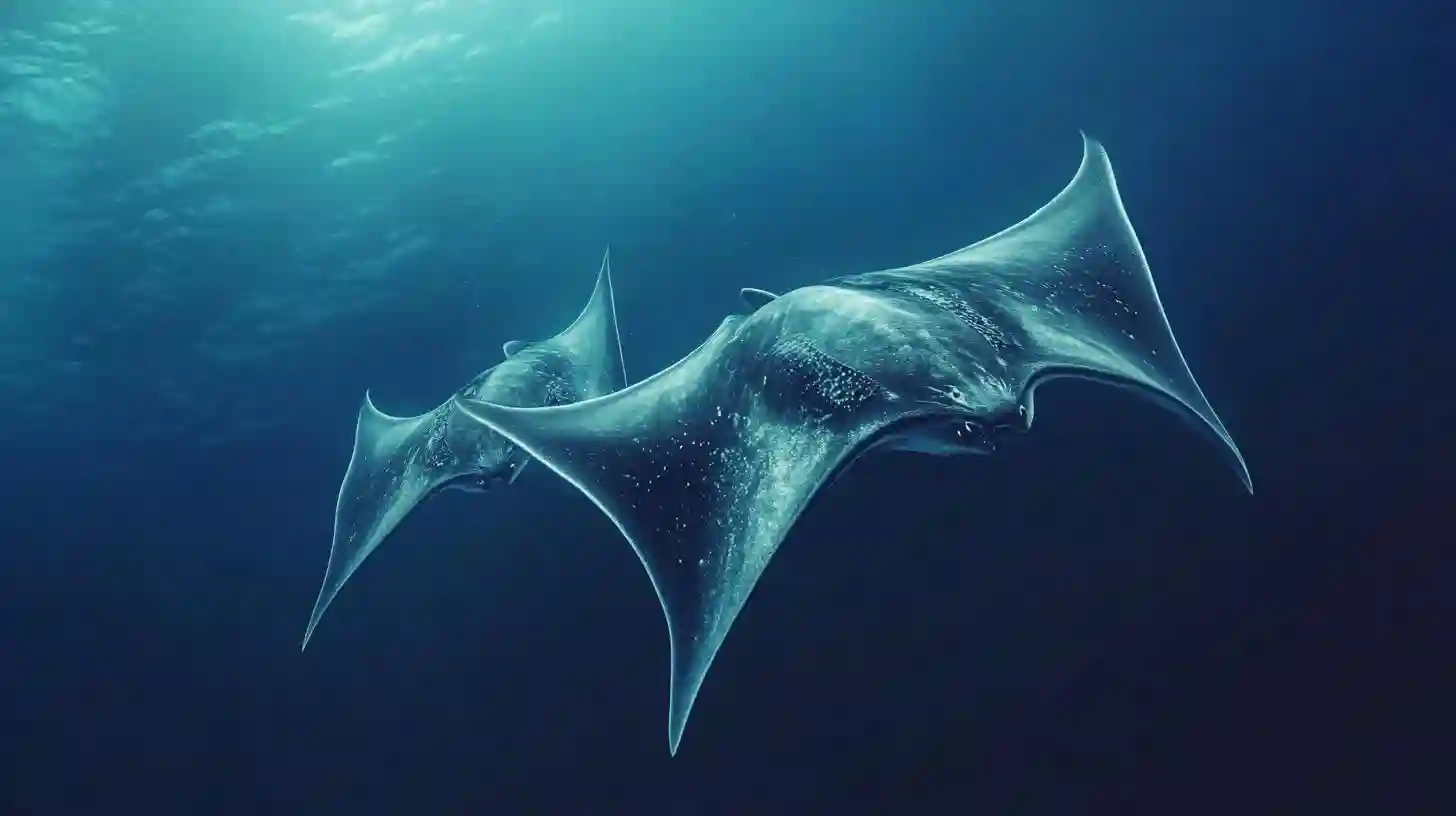
Thoughtvaultzone

Mobulas, often referred to as ocean aliens due to their extraordinary appearance and behavior, inhabit a realm that many have yet to explore fully. These fascinating creatures resemble flying saucers as they glide and leap through the water, captivating anyone fortunate enough to witness their graceful movements. Belonging to the family Mobulidae, they are closely related to manta rays and possess unique characteristics that set them apart in the marine environment.
Initially, mobulas can be identified by their distinct flattened bodies and elongated pectoral fins. These features enable them to maneuver with agility and grace, allowing them to travel swiftly through varied oceanic terrains. Most species of mobulas can grow to impressive sizes, with some reaching wingspans comparable to that of a small airplane. Their robust bodies enable them to adapt to different habitats, ranging from coastal waters to deep oceanic regions.
One of the most captivating aspects of mobulas is their feeding behavior. They are filter feeders, using specialized structures called gill rakers to capture plankton, small fishes, and other microscopic organisms as they swim through the water with their mouths wide open. This feeding mechanism is quite unique and establishes a fascinating dynamic between the mobula and its environment. They are often seen performing acrobatic jumps and flips above the surface, a behavior that has perplexed scientists for years. Some theories suggest that these aerial displays serve various purposes, including communication, navigation, or simply shaking off parasites.
Mobulas are not just remarkable for their physical appearance and feeding techniques; they also exhibit complex social behaviors. These creatures are often observed in groups, showcasing an intricate social structure and well-developed interactions among their peers. They engage in cooperative hunting, coordinating with one another to corral prey into dense clusters, making it easier for the group to feed effectively. This level of collaboration hints at a level of intelligence and social awareness that scientists are only beginning to understand.
The reproductive habits of mobulas also reveal a more profound mystery. Unlike many fish species that lay thousands of eggs, mobulas give birth to live young after a gestation period that takes over a year. This strategy highlights a significant investment in each offspring's survival, allowing the young mobulas to be born at a size that helps them evade numerous predators. Moreover, the courtship displays among mobulas are elaborate and theatrical, involving synchronized swimming and elevated leaps, suggesting that these behaviors play a critical role in mate selection.
In recent years, mobulas have attracted increasing attention from marine researchers, conservationists, and enthusiasts alike. While they have historically been overlooked in favor of more famous marine species like whales or sharks, they play an essential role in maintaining the balance of oceanic ecosystems. Their feeding helps to regulate the populations of plankton and other small organisms, contributing to the overall health of marine biodiversity. However, despite their ecological importance, mobulas are threatened by extensive fishing practices, pollution, and habitat degradation. Many species within this family face critical population declines due to the demand for their gill plates, which are prized in certain traditional medicines. As a result, efforts are underway to establish more protective measures and promote sustainable practices that can help safeguard their habitats and future.
The more scientists study mobulas, the more they realize how little is known about these enigmatic creatures. There remains a vast array of unanswered questions surrounding their life cycles, migratory patterns, and the extent of their intelligence. Understanding their role within the ecosystem not only unveils the secrets of these ocean aliens but also underscores the importance of marine conservation.
As research progresses, the hope is that mobulas will gain recognition not just as fascinating creatures of the ocean, but as vital components of the marine environment. Their unique characteristics, intricate social structures, and ecological roles are essential pieces of the puzzle that makes up life beneath the waves. By promoting awareness and understanding of mobulas, society can advocate effectively for their protection and that of their habitats, ensuring that these ocean aliens can continue to thrive for generations to come. The story of mobulas is one of resilience, adaptation, and a reminder of the wonders of our planet's oceans, inviting us to look deeper and explore the mysteries that lie beneath the surface.